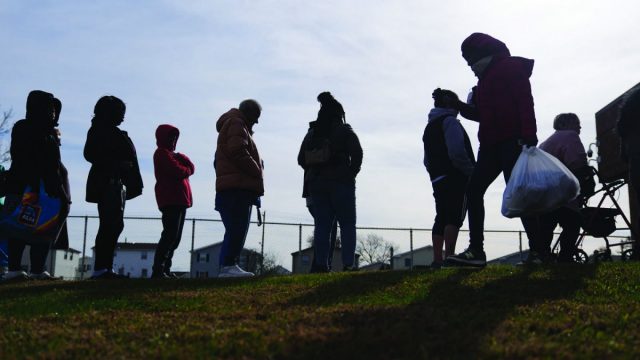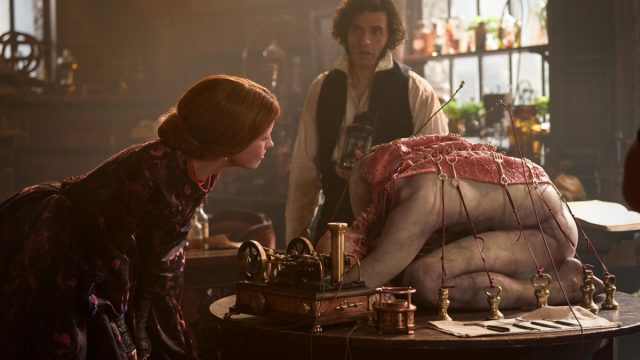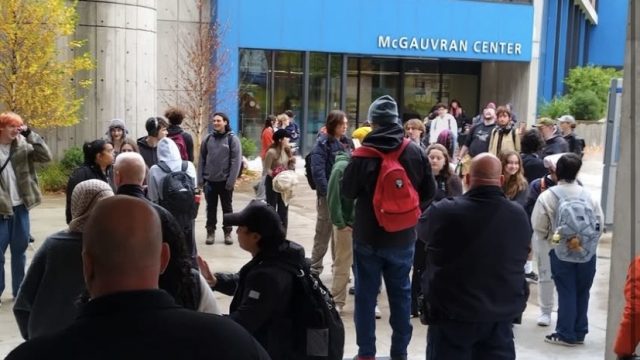(Photo courtesy of Matt Rourke) “Americans wait in line for food assistance”
Olivia O’Sullivan
Connector Staff
In the wake of the government shutdown, the U.S. Department of Agriculture (USDA) announced that it would run out of funding to operate SNAP – the federal food assistance program – by November. The Trump administration previously stated that it would not be subsidizing November’s SNAP benefits with emergency funds.
Before the cuts took effect on November 1, U.S. District Judge John McConnell ordered the Trump administration to fund the program. In response, the DOJ agreed to provide 65% of the benefits through a contingency fund. Trump took to his social media to state that SNAP benefits would be withheld until Senate Democrats agreed to the Republican legislature and the shutdown ended. Despite this statement, Press Secretary Caroline Leavitt has stated that the administration does not plan to defy court orders.
On the morning of November 7, Judge McConnell explicitly ordered the Trump administration to pay for SNAP benefits in full and suggested that the administration showed disregard for his previous order. He has accused Trump of using the hunger of Americans as a political tool, referring to his social media post that the gridlock must be ended for benefits to resume. Trump sought a federal appeals court to block McConnell’s ruling. On November 8, the Supreme Court allowed the administration to pause payments, leaving the future of SNAP during the government shutdown uncertain.
While SNAP is widely regarded as a supplemental program, it serves as a primary source of food for millions in the United States. Food banks have been overwhelmed over the last week, and without federal support, local governments do not have the infrastructure to mitigate the effects of the cuts. The effects of SNAP cuts have demonstrated the sheer breadth of food insecurity in the United States. Should SNAP be inaccessible in the long-term, the effects will be felt by all. As an economic stabilizer it has a multiplier effect. According to data tables published by the USDA, every dollar in SNAP benefits generates $1.54 in economic activity. Many grocers and businesses in lower income communities also rely on SNAP dollars. With nearly 42 million Americans – over 12% of the U.S. population – receiving aid from the program, the lack of this economic stimulus will be apparent.
Over a quarter of Lowell households depend on SNAP for sufficient access to food. The community has quickly come together and taken action to provide for one another. Family-owned business Nibbāna Cafe has stepped up to feed Lowell. The cafe began offering a SNAP breakfast program to provide breakfast to those impacted by the cuts, no questions asked. In addition, they are operating a communal food pantry open to all. To owner Romany Meas, food is not something that can be taken away. She states, “Breakfast is for everybody. Food is a basic human right. My family fled from war and as immigrants, food stamps are deeply rooted in our community to help us get on our feet. I was on food stamps for a very long time. I went to school, tried to educate myself, save money while my husband worked and we ended up opening a barbershop… because of (the program) it got my family here today, so it’s very personal. The goal is to do this forever. With the help of community donations, we can have it going for as long as we want, as long as we need to. Sometimes we all struggle regardless of if we’re on food stamps or not. Sometimes the bills are high. Sometimes the check comes late. No one should be hungry, and this little help goes a long way.” Donations for the breakfast program can be made at a link attached to the business’s Instagram page or in person, while donations for the food pantry can be brought to 122 Western Ave.
When asked about the significance of SNAP benefits, UMass Lowell freshman Katie Merino said, “It helps assist people of lower income, and they already have to buy basic necessities, so if it’s being withheld, then that’s another thing they have to worry about paying for.” At UMass Lowell, the UML Strive Pantry also provides supplemental assistance through the generosity of community donations. Donations can be made online or at the donation bin located outside of Suite 140 in the Graduate and Professional Studies Center.






